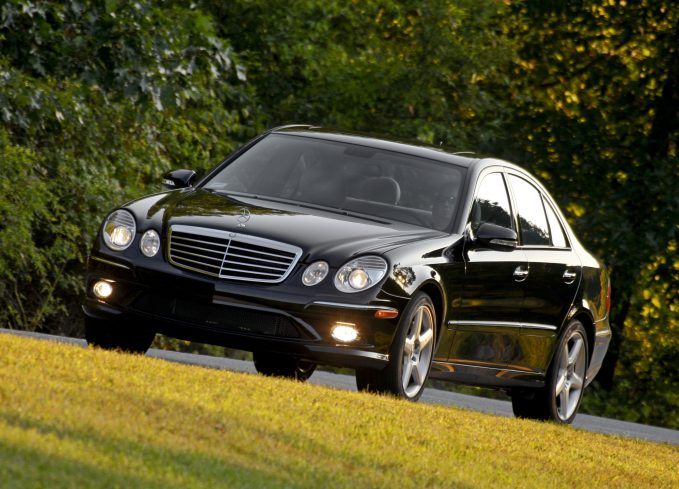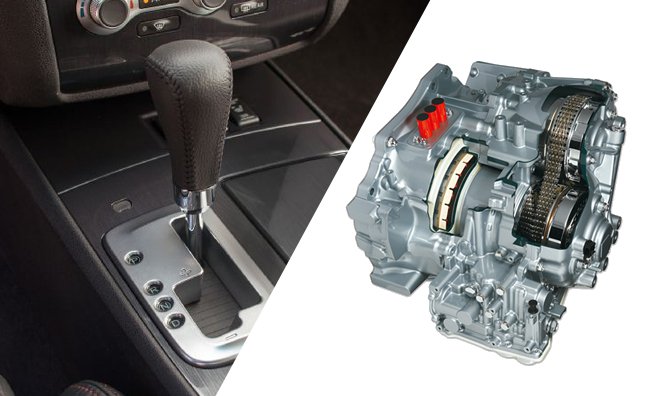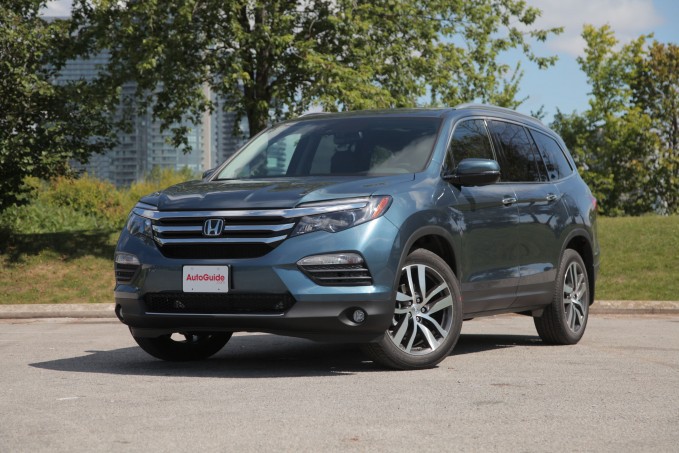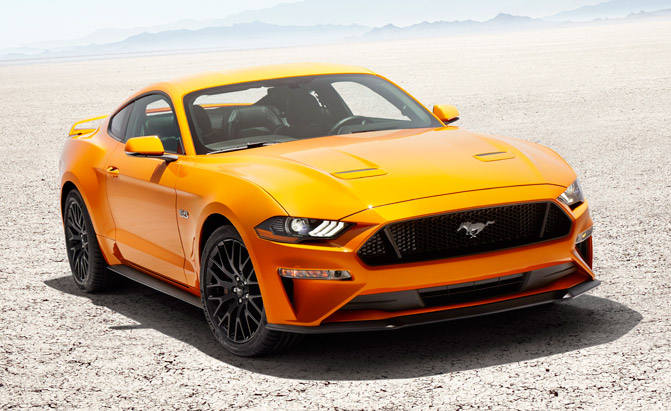The new Ford Mustang is offered with a 10-speed automatic transmission, and so is the new F-150 and Lexus LC500.
Other crossovers like the Jeep Renegade, Fiat 500X, and Jeep Compass sport nine-speed automatic transmissions as well, but what’s the advantage of having more gears in your transmission, and what’s the limit? Is having more gears really better?
With the goal of improved performance and efficiency, automakers have recently been increasing the number of gears in their transmissions.
“The biggest reason we’re all doing it is … we’re all seeking improvements in performance and fuel economy,” said Mark Champine, director of transmission and driveline quality at Fiat Chrysler Automobiles. “The improvements in both are coming with the additional gears.”
He explains that a transmission with more gears allows for a greater ratio spread between them, meaning the engine has more options for optimal operation.
“The spreading of the ratios helps put the engine in the most efficient operating area. And we’re able to do that with more ratios,” he said, adding that these transmissions allow for a higher first drive ratio, and a very low ratio overdrive gear. “We also get extra driving comfort as well. We can get a single gear kick down or a multi-gear kickdown depending on how aggressively you step onto the throttle.”
Simply put, more gears offer more flexibility for a car when it needs to accelerate and deliver peak power since the additional ratios can put the engine in its sweet spot. Then when the vehicle doesn’t need all that power, the transmission can enter a higher gear where the engine isn’t working as hard and is saving fuel instead.
Champine explains that the number of gears that cars had changed at an increasingly rapid pace. Cars moved from three to five-speed automatics through the 1990s, then five to six-speed transmissions through the 2000s. The first seven-speed gearbox popped up in 2003 thanks to Mercedes-Benz, but seven and eight-speed transmissions were only offered within the luxury car world for quite some time.
ALSO SEE: Should You Buy a Car with a CVT Transmission?
“We democratized these kinds of transmissions,” said Champine, suggesting that FCA brought cars with eight-speed transmissions to a wider and more mainstream market. In 2011, Dodge Chargers and Chrysler 300s could be equipped with eight-speed automatic transmissions. This transmission spread to the Ram 1500 truck lineup in 2013, while other FCA vehicles like the Dodge Durango and Jeep Grand Cherokee got the eight-speed in 2014. The Dodge Challenger received it in 2015. These days, FCA also offers a number of vehicles with nine-speed transmissions. The Ram ProMaster City, Jeep Cherokee, Compass, and Renegade are all offered with nine-speed transmissions, as is the Fiat 500X and Chrysler Pacifica.
In fact, FCA media relations spokesperson Eric Mayne also pointed out that the FCA manufacturing site in Indiana is the world’s largest production center for automatic transmissions.
Are Automatic Transmissions Better Than CVTs?
Fuel economy is an increasing concern for car buyers and one solution that opposes the extra gears method that FCA uses, is the continuously variable transmission. These units potentially have infinite gears, by using two cones attached to each other via a pulley or belt. These cones move closer together or further apart to increase or decrease the diameter at which the belt operates. However, while CVTs are efficient, they miss out on a few important aspects to the driving experience like responsiveness.
“CVTs work well in smaller displacement engines,” explains Champine. FCA used CVTs in some of its older vehicles, notably the Jeep Compass and Patriot. While efficient, the automaker switched back to a conventional automatic in the new generation Compass, and that transmission uses nine-speeds. “Engines that make more horsepower and torque, exceed the capacity of the CVT,” Champine said about the now
“Engines that make more horsepower and torque exceed the capacity of the CVT,” Champine said about the now canceled transmission option. “The torque capacity is a limiting factor, which is why you won’t see them as predominantly. “
Why Not a Dual Clutch Transmission?
Another strong candidate when it comes to the automatic transmission is the quick-shifting dual clutch transmission (DCT), but traditional automatics seem to be preferred over these units as well. Often found on performance vehicles, DCTs are also making their way to more mainstream cars as well, but are often criticized. Ford’s dual clutch transmission found in the Fiesta and Focus was introduced back in 2011 and faced many owner complaints about lurching or stalling in city driving, and a technical service bulletin was issued to address “a loss of power, hesitation, surge, or lack of throttle response while driving.”
A class action lawsuit is in the works to address concerns with the transmission, arguing that they aren’t operating as advertised.
Honda also has some lackluster experience with dual clutch transmissions. With the 2015 Acura TLX, the automaker introduced an eight-speed dual clutch transmission that also used a torque converter to address the stuttering concerns of traditional DCTs. This, too, has piled up complaints with NHTSA about hesitations, surging or jerky shifts at low speeds.
J.D. Power and have noticed this trend and are penalizing automakers and vehicles that use dual clutch transmissions over traditional automatics, which is why these high-gear automatics are proving to be more successful with consumers.
Are Transmissions With More Gears Reliable?
We asked Champine if adding more gears to a transmission makes it less reliable or more complex. “No durability or reliability concerns from our end,” he said, adding, “it just requires more comprehensive testing conditions.”
Sure enough, the TorqueFlite 8 used in various FCA products, as well as the nine-speed automatic transmission are actually based on the eight-speed transmission from supplier ZF. ZF supplies automatic transmissions for a lot of automakers from BMW to Honda and even Jaguar. Each automaker has its own calibration of the transmissions, which can change the driving experience. And the reliability and quality ratings of these cars’ transmissions vary as widely as the applications you can find them in.
ALSO SEE: Honda Patents 11-Speed, Triple-Clutch Transmission
“You have to meet the customer’s expectations,” said Champine. “We have to get acceptable shift quality and calibration of the transmission so we can deliver a pleasant driving experience.”
Indeed, when the nine-speed automatic debuted, there were many complaints about the lack of refinement. The 2014 Jeep Cherokee debuted with the industry’s first nine-speed transmission and critics were harsh about the shift logic and harshness of the gear changes. In our review back in 2014, our Detroit Bureau Editor Craig Cole wrote, “The nine-speed transmission is a technological achievement that mostly gets the job done without fuss. However, when it’s cold, the shifts feel quite a bit firmer than they should, almost like it’s banging into gear. Fortunately, things smooth out a bit once everything warms up, but it’s still not quite as smooth as I’d like it to be.”
The automaker had to fix its offering. “We’ve worked through some refinement issues in the past and think we have something here that customers will be happy with,” said Champine. Indeed, newer vehicles from FCA have transmissions that are smoother and smarter in their shift logic.
In our recent review of the Chrysler Pacifica, Cole mentioned the transmission again, but with a different take. “A nine-speed automatic is the only transmission offered, but don’t worry, it’s smooth and speedy, swapping ratios without any fuss, which is exactly the way it’s supposed to function,” he wrote, adding “Chrysler’s had myriad issues with this ZF unit in other products like the Jeep Cherokee and 200 sedan, where it’s earned a reputation for being both harsh and unresponsive. Well, at long last, engineers have managed to civilize what was once unruly; the dream of an efficient, responsive nine-speed automatic is finally realized.”
What’s Next in Transmissions?
As nine-speed transmissions have found homes in many new cars, other automakers are jumping ahead to 10 speeds. It seems to depend on the vehicle lifecycle and when the automaker is going to make the commitment to changing up such an important part of the vehicle. While Lexus is bringing a 10-speed automatic to the market with the LS and LC 500 vehicles, you can be assured that this double-digit auto isn’t going to be reserved for high-end vehicles, as GM and Ford have both agreed to deliver more mainstream vehicles with that many gear ratios. But are there more speeds coming?
“We’ll see the number level off. We probably won’t go over the eight, nine or 10-speed threshold,” said Champine. Depending on the type of vehicle and engine type, it seems likely that the cars of the future may not exceed 10.
“The more gears you have, the more complex the architecture of the transmission becomes,” explains Champine, adding that complexity doesn’t mean a lack of reliability or quality. “When that happens, you get more friction losses and, as a result, you lose the efficiency benefits.” In other words, we may have reached “peak transmission,” where having more and more gears will begin to see diminishing returns.
Transmissions have become very advanced and specialized for a number of applications. While manual stick shifts may fit the bill for the enthusiast crowd or those looking to save some money on the total price of the vehicle, automatic transmissions have far more varied purposes.
The Verdict: Is Having a Transmission With More Gears Really Better?
Continuously variable units are efficient, but best suited for small, low-torque engines. Dual clutch transmissions seem perfect for speed and performance vehicles, where harsh shifts or low-speed refinement aren’t a huge priority. And, finally, automatics with a high number of gears seem to be the jack of all trades, offering good fuel economy while also being well suited for high torque, bigger displacement engines.












